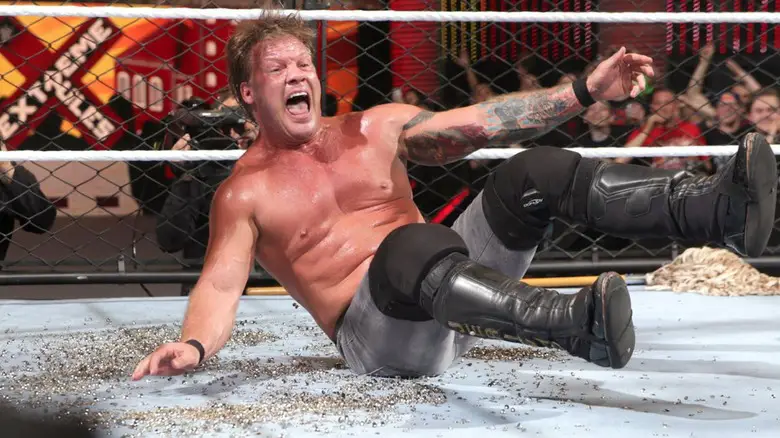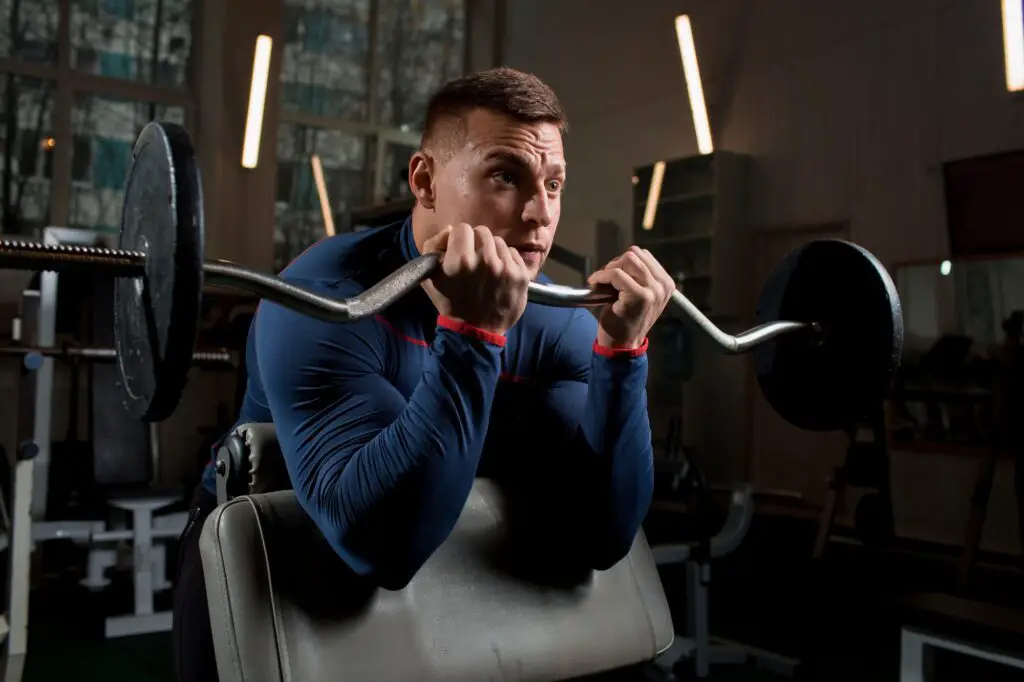The insane adrenaline rush – you probably watch WWE matches for this kick. But did you know, it’s not only about entertainment.
WWE Superstars put their bodies through incredible physical challenges during every match. Behind the seemingly effortless performances lies meticulous planning to protect their bodies while delivering captivating entertainment…
1. Mastering Safe Landings

Wrestlers are trained extensively on how to absorb impacts, reducing the risk of injury. Techniques include rolling upon landing and spreading the impact across larger areas of the body.
Safe landing techniques prevent concentrated force on vulnerable joints and bones, minimizing the chances of fractures or sprains.
How It’s Taught
- Learning how to break falls with arms and legs evenly.
- Rolling to dissipate momentum after high-flying moves.
- Practicing repetitive falls on padded surfaces to perfect technique.
2. Strengthening the Core for Stability
Core strength is critical for absorbing impacts and maintaining balance. WWE wrestlers dedicate significant time to strengthening their abdominal and lower back muscles. A strong core acts as a protective shield, stabilizing the body during intense physical activity.
A well-trained core absorbs shocks and supports spinal alignment, reducing the risk of back injuries.
Key Exercises
- Planks for endurance and stabilization.
- Hanging leg raises to target lower abs.
- Medicine ball twists for rotational strength.
3. Using Protective Gear

Wrestlers often wear protective gear carefully designed to shield vulnerable areas while remaining discreet. Examples include padded boots, knee braces, and compression sleeves. These accessories provide additional support and reduce the risk of strains.
Protective gear cushion impacts, stabilizes joints, and reduces strain on muscles during demanding movements.
Common Examples
- Wrist wraps to prevent sprains during grapples.
- Knee pads to cushion fall and reduce joint pressure.
- Custom-fitted mouthguards to prevent dental injuries.
4. Pre-Match Warm-Ups to Prepare the Body

Warming up before matches is essential for reducing injury risk. Wrestlers engage in dynamic stretching, light cardio, and joint mobilization exercises to loosen up their muscles and improve flexibility.
Warm-ups increase blood flow to muscles, enhancing elasticity and reducing stiffness. Prepared muscles are less likely to tear.
Typical Warm-Up Routine
- Light jogging to increase heart rate and circulation.
- Dynamic stretches like leg swings and arm circles.
- Joint rotations to ensure mobility in shoulders, hips, and knees.
5. Perfecting Timing and Coordination
Precision timing and coordination are vital for executing moves safely. Wrestlers rely on constant communication and years of practice to ensure both competitors understand the choreography of the match.
Well-timed movements reduce the likelihood of missteps or collisions, preventing injuries caused by poor execution.
How It’s Developed
- Rehearsing complex sequences repeatedly.
- Building trust with opponents during practice sessions.
- Using hand signals or verbal cues for real-time adjustments.
6. Adapting Techniques for Individual Strengths

WWE Superstars customize their wrestling styles to match their physical capabilities and limitations. For example, lighter wrestlers emphasize speed and agility, while heavier wrestlers use power-based moves.
Tailoring techniques reduce unnecessary strain and plays to the wrestler’s strengths.
Examples of Adaptations
- High-flyers like Rey Mysterio rely on quick aerial maneuvers.
- Powerhouses like Brock Lesnar focus on suplexes and ground-based dominance.
- Technical wrestlers like Daniel Bryan use submission holds to conserve energy.
7. Post-Match Recovery for Injury Prevention
Post-match recovery routines are crucial for maintaining physical health. Wrestlers use a combination of stretching, ice baths, and foam rolling to relieve muscle tension and reduce inflammation after matches.
Effective recovery promotes muscle repair, reduces soreness, and prevents long-term injuries caused by repeated strain.
Common Recovery Techniques
- Stretching to relax tight muscles and improve flexibility.
- Cold therapy to minimize swelling and inflammation.
- Foam rolling to release lactic acid buildup.
8. Hydration and Nutrition to Support Physical Health

Proper hydration and nutrition are essential for protecting the body during matches. Wrestlers ensure their bodies are fueled with the right nutrients and stay hydrated to maintain energy levels and support recovery.
Well-nourished muscles are less prone to fatigue and injury. Hydration helps maintain joint lubrication and focus during performances.
Nutritional Staples
- Lean proteins like chicken and fish for muscle repair.
- Complex carbs like quinoa and oats for sustained energy.
- Electrolyte-rich drinks replenish minerals lost through sweat.
9. Mental Focus to Avoid Mistakes
Mental focus is as important as physical preparation in wrestling. Wrestlers use visualization and mindfulness techniques to stay sharp and anticipate movements, minimizing errors that could lead to injuries.
A focused mind improves reaction time, ensures clear communication, and prevents accidents caused by distraction.
Techniques Used
- Visualization of moves before entering the ring.
- Breathing exercises to remain calm under pressure.
- Focusing on hand-eye coordination during practice drills.
10. Building Resilience Through Strength Training

Strength training is a core component of injury prevention. Wrestlers build muscle to protect joints, improve endurance, and withstand impacts. Heavy lifting and resistance exercises are integral to their routines.
Strong muscles act as shock absorbers, reducing the risk of ligament and tendon injuries during intense matches.
Popular Exercises
- Deadlifts to strengthen the posterior chain.
- Squats for lower body power and stability.
- Bench presses for upper body strength and endurance.
Result-driven Strategies
Many of the strategies used by WWE wrestlers can benefit everyday fitness. Here’s how:
- Prioritize Warm-Ups: Always prepare your muscles before intense workouts to reduce injury risks.
- Strengthen Your Core: Focus on core stability to improve balance and support other physical activities.
- Use Proper Equipment: Wear gear that protects your joints and supports your movements.
- Adapt to Your Strengths: Choose exercises that align with your abilities to minimize unnecessary strain.
- Commit to Recovery: Dedicate time to post-workout recovery to avoid overtraining injuries.
End Note: WWE wrestlers endure demanding physical challenges while ensuring their safety through meticulous preparation and discipline. Their strategies reflect the importance of a well-rounded approach to body protection.






